Proud son in troubled times | Coffee culture in Honduras
"Outstanding Central American origin, two brands located on both sides of the mountain range, showing very different styles. El Cielito's César Fernandez's coffee has fruity aromas of cranberries, raisins and apricots, while San Luis Plane's Mariano Mejía's coffee is more green tea, red gallons and hazelnuts."
--Cafe Grumpy Coffee Purchasing Cheryl Kingan
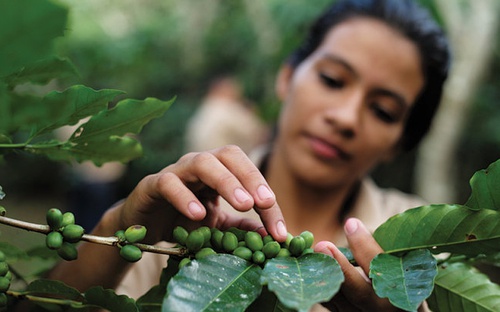
Speaking of coffee in Central America, you may immediately think of coffee-producing countries such as Guatemala, Costa Rica and Panama. But El Salvador, Nicaragua and Honduras are also big coffee producers in Central America.
Although Honduras is relatively unknown, it can be known for its reputation as one of the most restless countries due to political turmoil, and its world-famous diving resort, the Blue Cave of Honduras. But now honduras's coffee industry is quietly showing its edge, producing beans that have reached the quality of fine coffee. And this time we will learn about Honduran coffee under the turmoil.
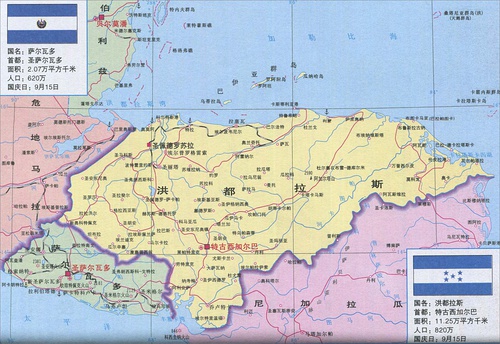
Honduras is a mountainous country in Central and North America with a population of more than 8.3 million and an area of about 112,000 square kilometers. Located in northern Central America. It is bordered by the Caribbean Sea to the north, the Gulf of Fonseca in the Pacific Ocean to the south, Nicaragua and El Salvador to the east and south, and Guatemala to the west. More than three-quarters of the territory is mountainous and plateau. Mountains extend from west to east, inland for lava plateau, multi-mountain valley, coastal plains. Tropical climate, coastal plains are tropical rain forest climate.
Honduras coffee is imported from El Salvador. Coffee production was lukewarm until the Brazilian frost of 1975. Brazil was hit hard, coffee production plummeted, while Honduras took advantage of the opportunity to "rise", coffee production soared from 500,000 bags to 1.8 million bags, and was looted. Coffee production in Honduras really took off after that.
Honduras is no less geographically endowed than neighbouring coffee-producing countries such as Guatemala and Nicaragua for coffee production. There are 280,000 hectares of coffee plantations in Honduras, mainly small coffee plantations, most of which are less than 3.5 hectares. These coffee plantations account for 60 per cent of Honduras 'coffee production.
In coffee plantations, because they are grown in mountainous areas, coffee beans are picked by hand and carefully processed to produce better coffee beans. Honduras harvests three million bags of coffee every year, and the quantity and quality of coffee it provides to everyone is now one of the top ten coffee exporters in the world.
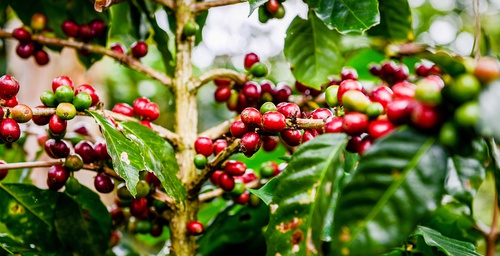
In Honduras, coffee production is divided into six regions, located in the west and south: Santa Barbara, El Paraiso, Copan, La Paz, Comayagua and Olancho, with an average planting height of more than 1100 meters. Coffee varieties are Arabica, 69% belong to HG "high coffee" grade, 12% belong to SHG "special highland coffee", 19% belong to CS. The main varieties are Typic, Bourbon, Caturra, Villa Sarch and Lempira.
Therefore, two kinds of coffee produced in Honduras are of very good quality, one is "highland coffee" grown at an altitude of 1,000 to 1,500 meters, and the other is "selected highland coffee" grown at an altitude of 1,500 to 2,000 meters, representing the highest level in Honduras. Most of them are exported to the United States and Germany.
Although Honduras coffee does not have very distinct characteristics, but the overall taste is rich and balanced is its biggest feature. In detail, it has moderate or light acidity, giving a distinct but not intense feeling. Sometimes with a slight floral or fruity aroma (generally different regions, different altitudes of beans have different flavor performance) slightly bitter and obvious sweet back. Honduras taste overall balanced, acid and bitter are not strong, the balance between the two is excellent. Therefore, Honduran coffee's extremely balanced characteristics make it widely used. It can be used to blend coffee or brewed as a single item, and Honduran coffee can be used to blend espresso for a more commendable flavor display.
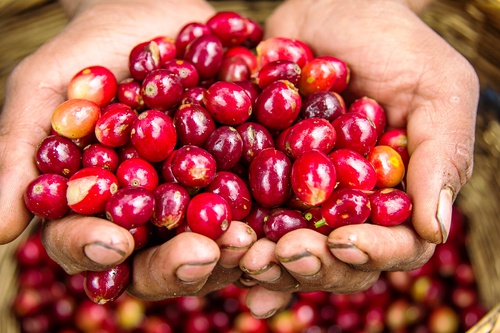
This quality is displayed because Honduras coffee beans have a large particle shape, uniform size, uniform color and luster. To make harvesting easier, farmers prune coffee trees to no more than 150 centimeters, which requires a ladder to pick, which takes time and can damage the tree by bending branches. Because the maturity of each fruit of coffee beans is different, in order to maintain the good quality of coffee beans, it is necessary to pick them artificially, and then select the ripe red fruits. The coffee fruit of the same branch often takes several weeks to harvest.
Moreover, Honduras 'high-quality coffee uses water washing method to treat coffee beans, which generally needs to be soaked first. When soaking, defective fruits will surface and can be discarded first. The good fruit is then placed in a fruit peeler and peeled off by the rotating force of the machine. The peeled fruits are screened by machines to select excellent quality fruits. Usually larger fruits represent better maturity. Honduran coffee is sun-dried, so it always has a light fruity taste.
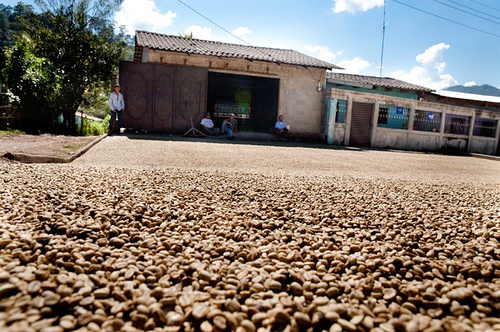
And Honduran coffee can elicit multiple levels of flavor depending on the degree of roasting. Moderate roasting can maximize the sweetness of beans, while deep roasting can increase bitterness, but the sweetness does not disappear. Generally speaking, medium roast tastes best, has a rich and unique aroma, and is favored by Honduran coffee lovers.
At present, although Honduras is now a backward and chaotic country, this small country in Central America is also one of the cradles of Mayan civilization. There are many Mayan civilization ruins in Honduras. It has beautiful tropical seaside scenery. If there is no such turbulent situation, it will definitely become a tourist destination. If there is no such turbulent situation, the coffee here will definitely be even better.
Author:
Qingdao Coffee Walk
XCAFFE Yangkai
Important Notice :
前街咖啡 FrontStreet Coffee has moved to new addredd:
FrontStreet Coffee Address: 315,Donghua East Road,GuangZhou
Tel:020 38364473
- Prev
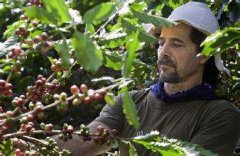
The coffee culture of Costa Rica, the happiest country in the world.
My love for Costa Rica comes from warm people, beautiful scenery and, of course, amazing coffee. Connie Blumhardt Costa Rica, publisher of Roast magazine, is known as the happiest country in the world. It has the laudatory name of Latin Little Switzerland. It is the only country in Latin America that does not have an army. Of course, it has to mention Costa Rica's pillar industry, Cafe.
- Next
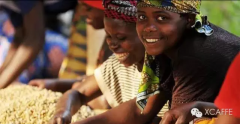
The unique African Dark Horse-- the Coffee Culture of Rwanda
We have never seen such a fast-growing producing area. In eight years, we have gone from a non-coffee producing country to one of the famous producing areas that can host international coffee competitions. This unprecedented growth rate is happening in front of our eyes. Geoff Watts Rwanda, vice president of Intelligentsia Coffee, is located in the southern equator of central Africa. It is a landlocked country with Tanzania to the east.
Related
- How did the Salvadoran coffee industry develop in Central America?
- What exactly does the golden cup extraction of coffee mean?
- The Origin of Coffee flower
- [2023 Starbucks World Earth Day] there are more meaningful things besides free Starbucks coffee!
- What kind of coffee is there in Spain? 9 Flavors of Spanish Coffee
- Aromatic African coffee| Kenya's coffee culture and historical production area
- Liberica Coffee Bean knowledge: the characteristics of Liberian Coffee beans of the three original species of Coffee beans
- The origin and formula of Spanish latte introduces the taste characteristics of Bombon coffee in Valencia, Spain.
- How to adjust the solution of over-extracted coffee
- What is the tasting period of coffee beans? What is the period of coffee and beans? How should coffee wake up and raise beans?

